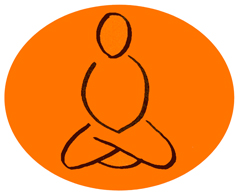 What should I do if I experience considerable physical pain in my knees and my back when I practice sitting meditation?
What should I do if I experience considerable physical pain in my knees and my back when I practice sitting meditation?
I love it when people ask technical questions about pain associated with meditation postures because, rather than just saying, “Make yourself comfortable,” it gives me the opportunity to explain why we suggest these postures in the first place.
One way to address concern about pain is to ask three basic questions: “How does sitting in a particular way increase the ability of the mind to see more clearly? How does seeing more clearly develop wisdom? And how does wisdom lead to compassion?” (It is, after all, wisdom and compassion, not stalwart sitting, that are the point of practice.)
So, how does sitting still, upright, and resisting the temptation to move, focus and clear the mind?
It is, indeed, a helpful technique. First, holding a styled position requires attention—attention brought to bear on the present situation—and so random thoughts are less likely to distract the mind. Second, the decisiveness in the mind that intends to be awake and present—“I’m doing this now”—also guards against distraction. And third, the mind itself, in a context of simplicity, has the natural tendency to return to ease. (I often think about the snow globes with lovely scenes at their center, scenes hidden from view as long as the “snow” is shaken up. Once the globe is left alone on a steady surface, the snow settles, and what is meant to be seen is revealed.)
What we most frequently see when the mind is focused and clear are the habits of mind that create unnecessary suffering, habits fueled by greed and hatred and delusion. Over and over we struggle with our lives, resenting our experiences, blaming ourselves for not being other than who we are. We are unable to see past the immediate, overwhelming drama of our personal story to find relief, indeed, liberation, in the consoling realization of an astonishingly lawful cosmos: paying attention to current experience stops the stories that create and recreate suffering.
The practice of seeing clearly is what finally moves us toward kindness. Seeing, again and again, the infinite variety of traps we create for seducing the mind into struggle, seeing the endless rounds of meaningless suffering over lusts and aversions (which, although seemingly urgent, are essentially empty), we feel compassion for ourselves. And then, quite naturally, we feel compassion for everyone else. We know as we have never known before that we are stuck, all of us, with bodies and minds and instincts and impulses, all in a tug-of-war with our basic heart nature that yearns to relax into love. Then we surrender. We love. We laugh. We appreciate.
So much for philosophy. Here is some additional, practical advice. Do try to find a position in which you can sit still. Then, even if modest discomfort arises in the body, sitting through it allows for the discovery that the mind can relax and manage discomfort. Sitting with modest discomfort teaches the mind to be less frightened. Experiencing the disappearance of discomfort soothes the mind, makes it confident, and allows for the insight of impermanence: Everything passes. Even the most comfortable positions—like the most comfortable lives—become uncomfortable after a while. That’s a lesson, too.
Here is a final, important, technical instruction: When the discomfort you feel is significant, move. Adjust your posture. You want your mind to be focused and alert, but not hysterical. When the level of discomfort is past the level at which the mind can maintain its balance, it is no longer useful. Rather than a cause for the arising of insight, the discomfort becomes the cause of dismay and doubt and disappointment. Much better to stretch your body, relax, and start again.